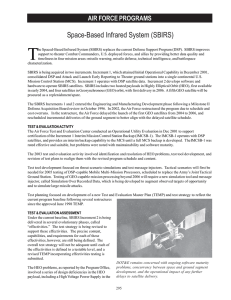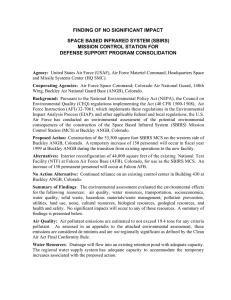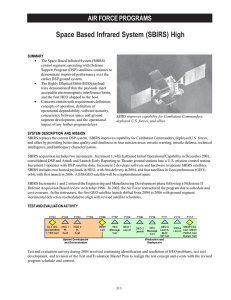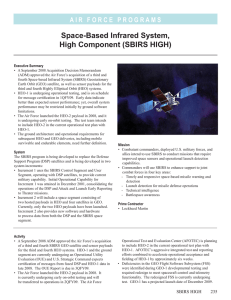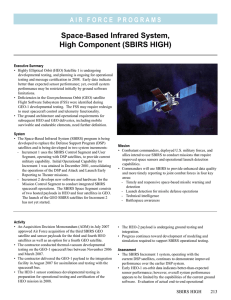FINDING OF NO SIGNIFICANT IMPACT SPACE BASED INFRARED SYSTEM (SBIRS)
advertisement
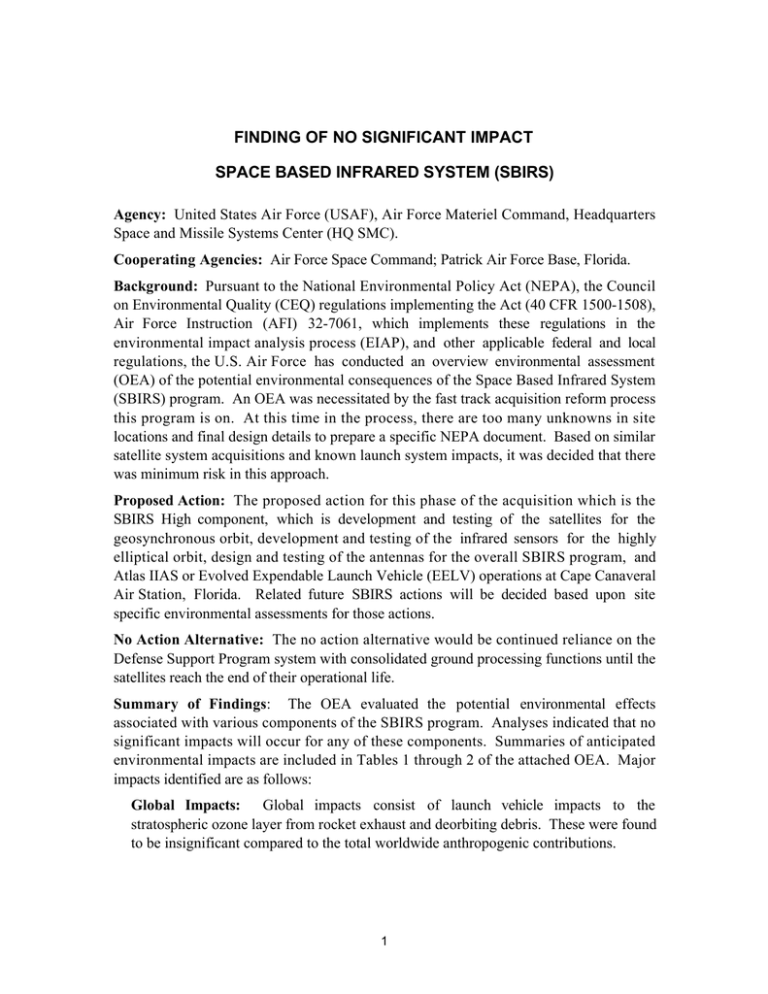
FINDING OF NO SIGNIFICANT IMPACT SPACE BASED INFRARED SYSTEM (SBIRS) Agency: United States Air Force (USAF), Air Force Materiel Command, Headquarters Space and Missile Systems Center (HQ SMC). Cooperating Agencies: Air Force Space Command; Patrick Air Force Base, Florida. Background: Pursuant to the National Environmental Policy Act (NEPA), the Council on Environmental Quality (CEQ) regulations implementing the Act (40 CFR 1500-1508), Air Force Instruction (AFI) 32-7061, which implements these regulations in the environmental impact analysis process (EIAP), and other applicable federal and local regulations, the U.S. Air Force has conducted an overview environmental assessment (OEA) of the potential environmental consequences of the Space Based Infrared System (SBIRS) program. An OEA was necessitated by the fast track acquisition reform process this program is on. At this time in the process, there are too many unknowns in site locations and final design details to prepare a specific NEPA document. Based on similar satellite system acquisitions and known launch system impacts, it was decided that there was minimum risk in this approach. Proposed Action: The proposed action for this phase of the acquisition which is the SBIRS High component, which is development and testing of the satellites for the geosynchronous orbit, development and testing of the infrared sensors for the highly elliptical orbit, design and testing of the antennas for the overall SBIRS program, and Atlas IIAS or Evolved Expendable Launch Vehicle (EELV) operations at Cape Canaveral Air Station, Florida. Related future SBIRS actions will be decided based upon site specific environmental assessments for those actions. No Action Alternative: The no action alternative would be continued reliance on the Defense Support Program system with consolidated ground processing functions until the satellites reach the end of their operational life. Summary of Findings: The OEA evaluated the potential environmental effects associated with various components of the SBIRS program. Analyses indicated that no significant impacts will occur for any of these components. Summaries of anticipated environmental impacts are included in Tables 1 through 2 of the attached OEA. Major impacts identified are as follows: Global Impacts: Global impacts consist of launch vehicle impacts to the stratospheric ozone layer from rocket exhaust and deorbiting debris. These were found to be insignificant compared to the total worldwide anthropogenic contributions. 1 Space Based Infrared System Finding of No Significant Impact Regional Impacts: There are no significant environmental impacts associated with this program. Local Impacts: Local impacts consist of the launch clouds from the launch vehicles, electromagnetic radiation from antennas and local spills from prelaunch activities. Launch cloud depositions and impacts are not significant. Electromagnetic radiation from antennas are mitigated by operational constraints and safety procedures and are determined to be insignificant. Local spills are handled by proven base operational procedures and are identified in the attached OEA. Ground support facilities will be located at installations with similar facilities in previously disturbed areas. Prior NEPA analysis has shown that such facilities typically do not have significant impacts. Conclusion: Following a review of the attached overview environmental assessment, which is hereby incorporated by reference, I find that the Space Based Infrared System program will not produce significant environmental impacts, and an environmental impact statement is not required. This document, and the supporting environmental assessment, fulfill the requirements of NEPA, the CEQ regulations, and AFI 32-7061. Approved: JOHN L. CLAY COLONEL USAF HQ Space and Missile Systems Center Chairperson, Environmental Protection Committee 2 Date
